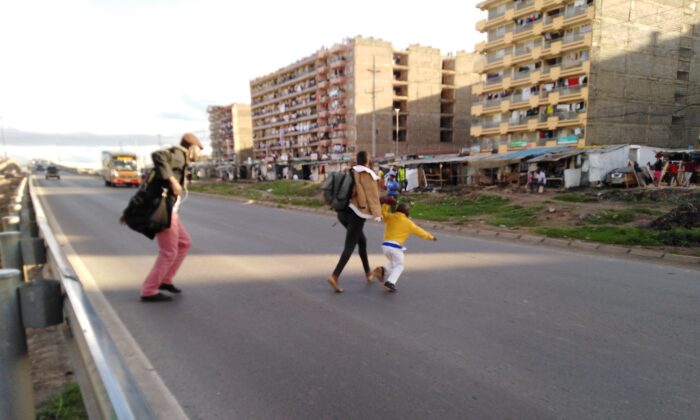
In Kenya, China built one of the country’s deadliest roads
Baca Juga

It’s evening rush hour in Embakasi, on the outskirts of Kenya’s capital, Nairobi. Commuters are busy alighting from buses as cars zoom by into and out of the city.
Occupants of the nearby residential areas of Pipeline and Fedha estates are out shopping for their evening meal, while others walk home from casual work in the area.
What they have in common is a need to cross the busy Outer Ring Road that originates here and cuts through the neighborhood.
As the vehicles speed along the recently expanded road, pedestrians scamper across the roadways, risking their lives on a daily basis. There’s no footbridge that would act as a lifesaver at this point in the road where so many people need to cross.
The reason, explain residents, is that the Chinese company that built the road has been slow to install footbridges, with some still not erected two years after its opening.
Most Dangerous Road
There have reportedly been scores of deaths and injuries since the road was expanded into a major four-lane highway in 2017, as pedestrians are hit and killed by fast-moving vehicles.
Simon Mwikali, a resident of Pipeline Estate, is a businessman who sells groundnuts near the road. He said that he watched as two of his friends were hit and killed by speeding vehicles.
Outer Ring Road
“Johnny had gone to get change for his customers as he was selling CDs just right here. A vehicle hit him and just like that he was gone,” Mwikali recalled.
Like many other pedestrians who have lost their lives on the busy road, Johnny’s life would likely have been saved had footbridges been installed before the road was opened for public use.
“Then my other friend Ras, who was a resident of Pipeline, was crossing to access the supermarket in the evening when he was also hit and killed. No one here looks to care about the safety of the pedestrians. All they mind about is for the vehicles to move. Us who don’t have cars don’t count for much,” Mwikali lamented.
Last year, data from National Transport and Safety Authority (NTSA) showed that the road had the highest number of fatal accidents in the city in the first six months of the year.
“Outer Ring Road was declared the riskiest road having recorded a total of 23 deaths during that period which were highest compared to other roads,” the report stated.
Statistics for 2019 to date reveal a similar picture, with 31 deaths recorded, making the Outer Ring Road the second-most dangerous in the city.
Joyce Mwende, a teacher at one of the academies in Embakasi, has to cross the road each morning to and from her place of work. She says she has witnessed many accidents on the road.
“As we cross in the morning every day, we can’t miss to see a person having been hit by a car. What the government talked about were only deaths. There are so many others who sustain injuries during these accidents,” she said.
In late September, Anthony Kariuki, an aide of the deputy president and a former Nation Media Group online editor, became a victim of a road accident on the Outer Ring Road.
According to the head of the Deputy President’s Press Service David Mugonyi, Kariuki was hit by a tour van as he crossed the road to his residence at about 10 p.m.
Previous Concerns
In 2014, the Kenyan government awarded the tender to the Chinese state-owned company SinoHydro Tianjin Engineering Co. Ltd to expand the congested 8 mile stretch from the Kenyatta International Airport through to the General Service Unit headquarters at a cost of 8.4 billion Kenyan shillings ($84 million).
According to the African Development Bank that financed the expansion project, the Outer Ring Road passes through the most densely populated area of Nairobi, which houses up to 70 percent of all residents in the city.
In its 2013 Environmental and Social Impact Assessment report, the African Development Bank noted that they held a public participation forum during which women living in the area expressed their concerns about the safety of children crossing the road as they headed to school, given the increased traffic speeds expected following the expansion.
One of the proposed solutions was the installation of footbridges.
Epochtimes
The post In Kenya, China built one of the country’s deadliest roads appeared first on Nile Post.

0 Response to "In Kenya, China built one of the country’s deadliest roads"
Post a Comment